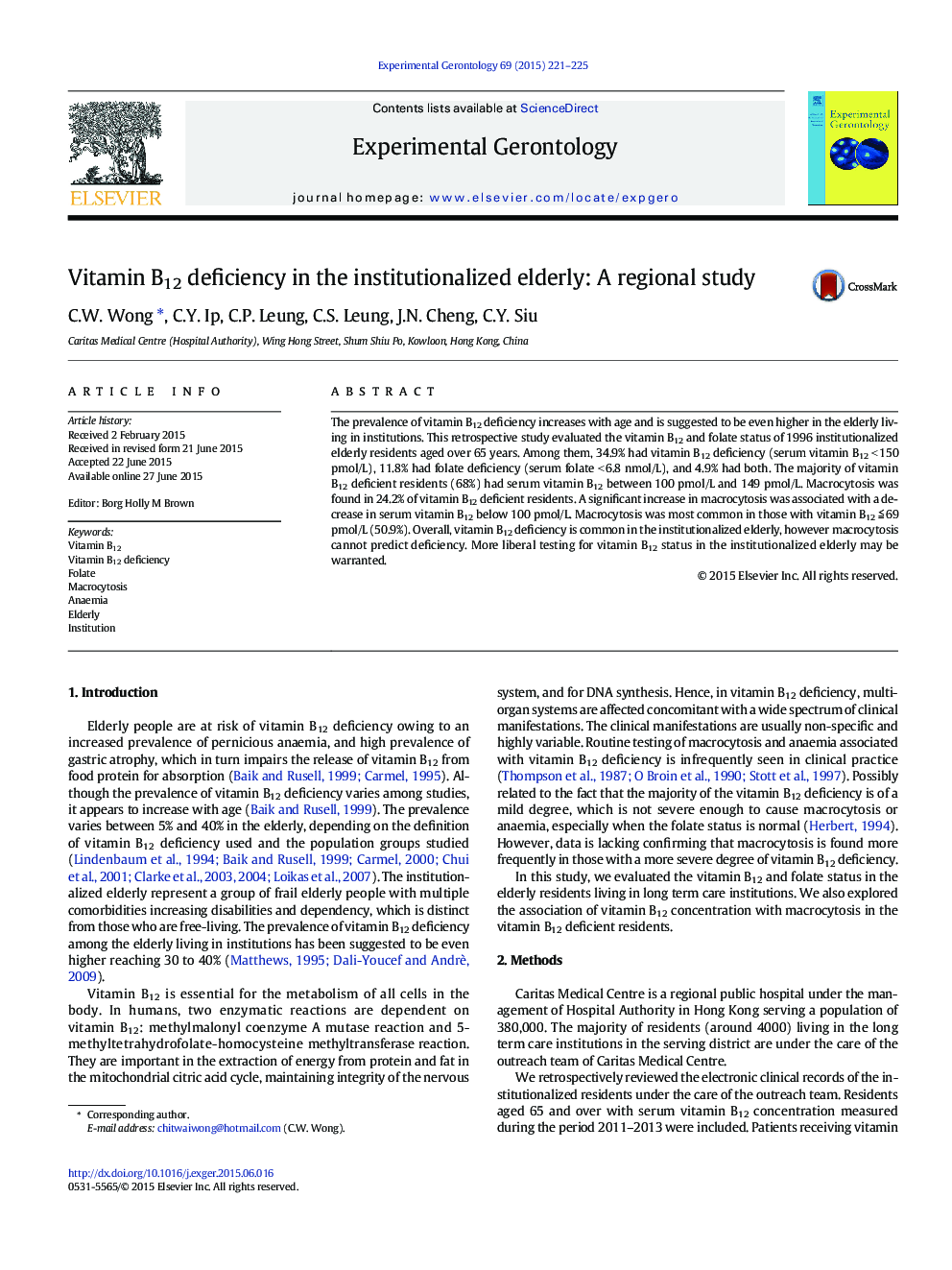| Article ID | Journal | Published Year | Pages | File Type |
|---|---|---|---|---|
| 8263443 | Experimental Gerontology | 2015 | 5 Pages |
Abstract
The prevalence of vitamin B12 deficiency increases with age and is suggested to be even higher in the elderly living in institutions. This retrospective study evaluated the vitamin B12 and folate status of 1996 institutionalized elderly residents aged over 65 years. Among them, 34.9% had vitamin B12 deficiency (serum vitamin B12 < 150 pmol/L), 11.8% had folate deficiency (serum folate < 6.8 nmol/L), and 4.9% had both. The majority of vitamin B12 deficient residents (68%) had serum vitamin B12 between 100 pmol/L and 149 pmol/L. Macrocytosis was found in 24.2% of vitamin B12 deficient residents. A significant increase in macrocytosis was associated with a decrease in serum vitamin B12 below 100 pmol/L. Macrocytosis was most common in those with vitamin B12 â¦Â 69 pmol/L (50.9%). Overall, vitamin B12 deficiency is common in the institutionalized elderly, however macrocytosis cannot predict deficiency. More liberal testing for vitamin B12 status in the institutionalized elderly may be warranted.
Related Topics
Life Sciences
Biochemistry, Genetics and Molecular Biology
Ageing
Authors
C.W. Wong, C.Y. Ip, C.P. Leung, C.S. Leung, J.N. Cheng, C.Y. Siu,
